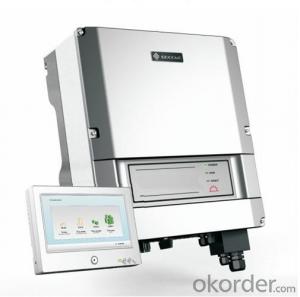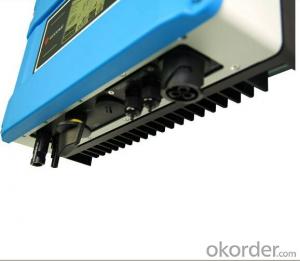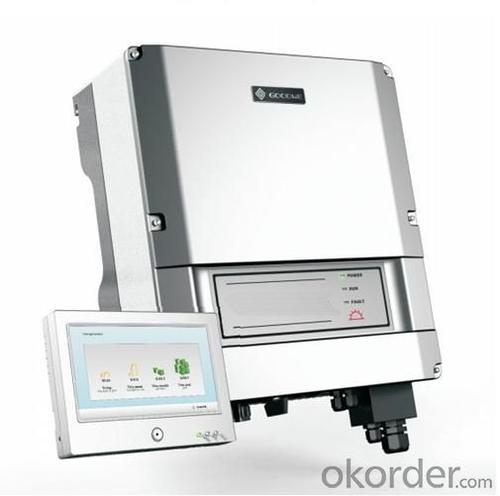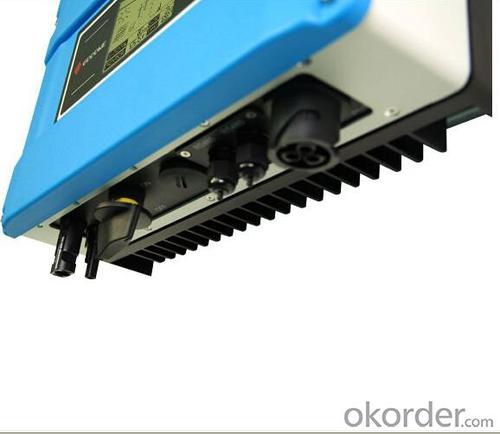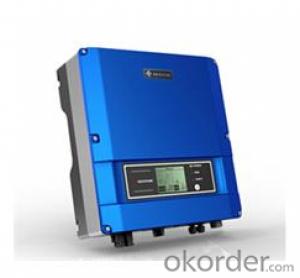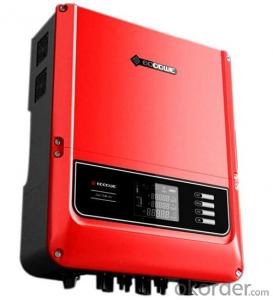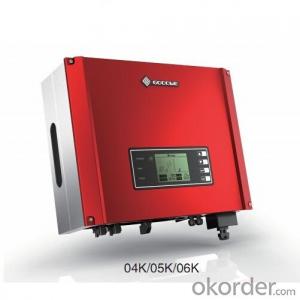IGBT On Grid Solar Inverter GW3000D-JP
OKorder Service Pledge
OKorder Financial Service
You Might Also Like
GW3000D-JP
JP Series Inverter is suitable to the domestic applications, and designed under modern ID concept, it has created a new standard for inverter technology with more advanced reactive compensation technology and dual MPPT trackers. Not only be able to connect with two phase grid system, this model but also could run as off-grid model, and the wide range of frequency of 50/60Hz makes it a good choice for Japan market. Moreover, the specialized monitor could perfectly control the inverter operation and data logging. IP65 high protective class of housing ensures the inverter work persistently and steadily under all critical environment.
Datasheet
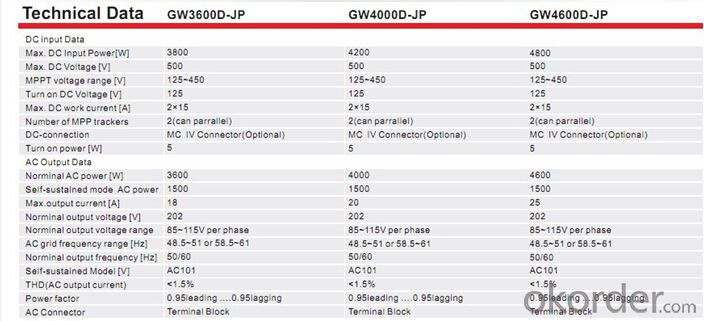
- Q: How do you choose the right output voltage for a solar inverter?
- When choosing the right output voltage for a solar inverter, several factors need to be considered. These include the electrical requirements of the appliances or devices that will be powered by the inverter, the maximum power capacity of the solar panels, and the efficiency of the inverter itself. It is important to select an output voltage that matches the voltage requirements of the appliances while ensuring that the inverter can handle the power load efficiently. Additionally, considering the compatibility of the inverter with the solar panel system and any battery storage can also influence the choice of the right output voltage.
- Q: How does a solar inverter handle fluctuations in solar panel output?
- A solar inverter handles fluctuations in solar panel output by continuously monitoring the voltage and current from the panels. It adjusts the input parameters to maintain a stable output power, compensating for variations in sunlight intensity, temperature changes, and other environmental factors. This ensures a consistent and reliable supply of electricity from the solar panels to the connected electrical load or the grid.
- Q: How does a solar inverter protect against power surges?
- A solar inverter protects against power surges by using built-in surge protection devices such as metal oxide varistors (MOVs) or transient voltage suppressors (TVS). These devices act as a barrier, diverting excess voltage from entering the inverter and the connected solar panels. This prevents damage to the inverter and other sensitive electronic components by ensuring that the voltage stays within safe limits.
- Q: How does a solar inverter handle frequency variations?
- A solar inverter handles frequency variations by continuously monitoring the grid frequency and adjusting its own output accordingly. It uses advanced control algorithms to maintain a stable output frequency, ensuring the smooth and synchronized integration of solar power into the grid.
- Q: What is the role of a solar inverter in a community solar project?
- The role of a solar inverter in a community solar project is to convert the direct current (DC) electricity produced by solar panels into alternating current (AC) electricity that can be used by homes and businesses in the community. It ensures that the solar energy generated is compatible with the existing electrical grid, allowing for seamless integration and distribution of clean energy to the community.
- Q: How does a solar inverter handle sudden changes in solar irradiation?
- A solar inverter handles sudden changes in solar irradiation by continuously monitoring the incoming solar energy and adjusting its output accordingly. When there is a sudden increase in solar irradiation, the inverter quickly ramps up its power conversion to match the higher energy input. Similarly, when there is a sudden decrease in solar irradiation, the inverter reduces its power conversion to align with the lower energy input. This dynamic response ensures that the inverter efficiently converts the available solar energy into usable electricity, maintaining a stable power output despite fluctuations in solar irradiation.
- Q: What maintenance is required for a solar inverter?
- Regular maintenance for a solar inverter typically includes visual inspection for dust or dirt accumulation, checking for loose connections, monitoring the inverter's performance, and ensuring proper ventilation. Additionally, it is recommended to clean the solar panels periodically to maximize the system's efficiency.
- Q: Can a solar inverter be repaired or serviced?
- Yes, a solar inverter can be repaired or serviced. Inverters are complex electronic devices that can experience faults or malfunctions over time. Depending on the issue, a qualified technician can diagnose and repair the inverter, replacing faulty components if necessary. Regular maintenance and servicing can also help identify potential problems and ensure optimal performance of the solar inverter.
- Q: Are there any maintenance requirements for solar inverters?
- Solar inverters do have maintenance requirements, although they are generally reliable and require minimal upkeep. To ensure optimal performance and longevity, regular inspections and maintenance are still necessary. There are several common maintenance tasks for solar inverters. Firstly, it is important to regularly clean the inverter to prevent the accumulation of dust, dirt, and debris on its surface, which can potentially affect its cooling capabilities. This will help prevent overheating and ensure efficient operation. Visual inspection is also crucial, as it allows for the identification of any signs of damage, loose connections, or corrosion that may impact the inverter's performance. Regularly checking for firmware updates is another important task, as manufacturers often release updates to enhance the inverter's performance and functionality. Installing these updates will ensure the inverter operates at its best. Utilizing a monitoring system allows for continuous monitoring of the inverter's performance, enabling prompt identification of any abnormalities or issues. This enables quick maintenance or repair. Lastly, it is advisable to have a professional solar technician inspect and maintain the inverter at least once a year. They can conduct more comprehensive inspections, test the inverter's electrical connections, and troubleshoot any potential issues. By adhering to these maintenance requirements, solar inverters can continue operating efficiently and reliably, maximizing the benefits of solar energy production.
- Q: Can a solar inverter be used with different types of energy management systems?
- Yes, a solar inverter can be used with different types of energy management systems. Solar inverters are designed to convert the direct current (DC) produced by solar panels into alternating current (AC) that can be used in various electrical systems. They can be integrated with different energy management systems, such as battery storage systems, smart grids, or even hybrid systems that combine solar power with other renewable energy sources. This flexibility allows for efficient and optimized utilization of solar energy in different setups and applications.
Send your message to us
IGBT On Grid Solar Inverter GW3000D-JP
OKorder Service Pledge
OKorder Financial Service
Similar products
Hot products
Hot Searches
Related keywords
